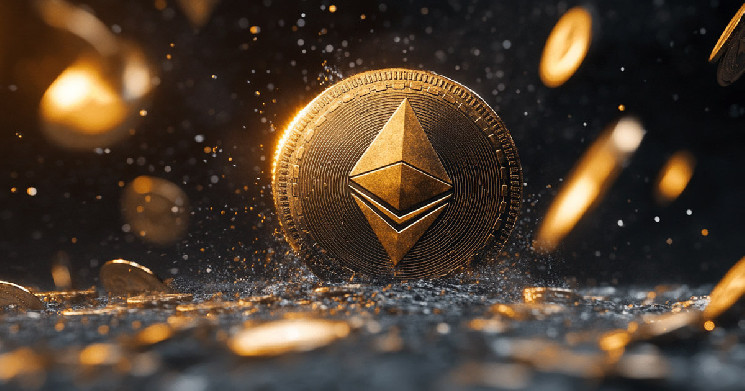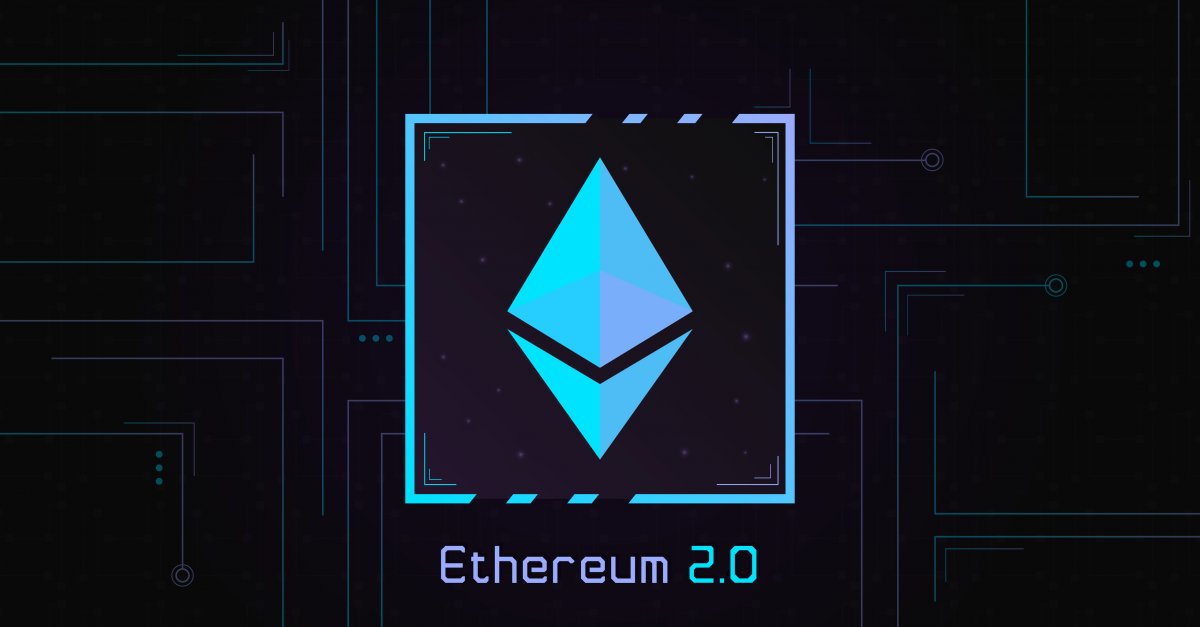What is Ethereum? A Beginner’s Guide

Ethereum Explained: The Blockchain Powering the Decentralized Future
While Bitcoin introduced the world to cryptocurrency, Ethereum took the underlying blockchain technology a giant leap further. Launched in 2015 by a team spearheaded by Vitalik Buterin, Ethereum isn't just digital money; it's a decentralized, open-source platform designed to run code, host applications, and potentially reshape the internet itself.
Often described as a "world computer," Ethereum provides the infrastructure for developers to build and deploy decentralized applications (dApps) and smart contracts without relying on traditional intermediaries or servers. This guide explores the fundamentals of Ethereum, how it works, its crucial role in the emerging Web3 landscape, and the challenges it faces.
Ethereum's Vision: Beyond Cryptocurrency
Ethereum's core innovation was recognizing that blockchain could do more than just record transactions. By integrating a programmable layer, it aimed to create a global, decentralized platform for computation.
- Smart Contracts: Self-executing pieces of code stored on the blockchain that automatically enforce the terms of an agreement.
- Decentralized Applications (dApps): Applications whose backend code (smart contracts) runs on a decentralized peer-to-peer network rather than centralized servers.
- The "World Computer" Metaphor: Ethereum acts like a single, globally shared computer (state machine) maintained by thousands of nodes worldwide, executing code and storing state changes securely and transparently via consensus.

Ethereum: The Backbone of Web3
Web3 represents the next evolution of the internet – one focused on decentralization, user ownership, and verifiable trust. Ethereum provides the foundational layer for many core Web3 concepts:
- True Digital Ownership: Through Non-Fungible Tokens (NFTs) primarily built on Ethereum standards (like ERC-721), users can provably own unique digital items (art, collectibles, virtual land) directly in their wallets.
- Decentralized Finance (DeFi): Ethereum hosts a vast ecosystem of DeFi protocols offering services like lending, borrowing, trading, and yield generation without traditional banks.
- Decentralized Identity: Solutions like the ENS (Ethereum Name Service) allow users to replace complex wallet addresses with human-readable names (e.g.,
yourname.eth), enhancing usability and forming part of a broader push towards self-sovereign identity (SSI) where users control their digital credentials.
Ethereum vs. Bitcoin: Key Distinctions
While both are pioneering blockchains, their goals and designs differ significantly:
| Feature | Bitcoin (BTC) | Ethereum (ETH) |
|---|---|---|
| Primary Goal | Peer-to-peer electronic cash, Store of value | Platform for dApps & smart contracts ("World Computer") |
| Functionality | Primarily transaction recording | Programmable (Turing-complete smart contracts) |
| Consensus | Proof-of-Work (PoW) | Proof-of-Stake (PoS) (Post-Merge) |
| Tokenomics | Fixed supply (21M cap) | No fixed cap (Controlled issuance + Burn mechanism) |
| Native Token | Bitcoin (BTC) - Currency/Asset | Ether (ETH) - Utility Token (Gas) / Asset |
| Block Time | ~10 minutes | ~12 seconds |
How Ethereum Works: The Technical Engine
Ethereum functions as a distributed state machine, where a global network of computers (nodes) collaboratively maintain and update the system's state according to protocol rules.
Ethereum Virtual Machine (EVM)
The EVM is the computational engine of Ethereum. It's a sandboxed virtual environment embedded within each Ethereum node, responsible for executing smart contract code (bytecode).
- Deterministic Execution: The EVM ensures that given the same input, every node executes smart contract code identically, which is crucial for achieving network consensus.
- EVM Compatibility: Its design has become a quasi-standard, allowing many other blockchains (like Polygon, Avalanche C-Chain, BNB Chain) to run Ethereum-compatible smart contracts.

Smart Contracts: Automated Agreements
Smart contracts are the building blocks of Ethereum applications. Written in languages like Solidity or Vyper, they are compiled to EVM bytecode and deployed to the blockchain.
- Self-Executing: They automatically run predefined actions when specific conditions are met, eliminating the need for intermediaries.
- Immutable & Transparent: Once deployed, the code generally cannot be altered, and interactions are publicly verifiable on the blockchain.
- Key Standards:
- ERC-20: The standard for fungible tokens (interchangeable units, like traditional currency or governance tokens).
- ERC-721: The standard for non-fungible tokens (NFTs), representing unique assets (digital art, collectibles).
- ERC-1155: A multi-token standard allowing both fungible and non-fungible tokens within a single contract, often used in gaming.
Decentralized Applications (dApps)
dApps use Ethereum's infrastructure (blockchain for state, smart contracts for logic) to offer services without centralized control points.
- Benefits: Censorship resistance, transparency, user control over data, potential for novel economic models.
- Examples (on Ethereum L1): Leading dApps often involve finance or asset trading:
Ether (ETH): The Fuel and Asset of Ethereum
Ether (ETH) is Ethereum's native cryptocurrency and plays several vital roles:
- Gas Fees: ETH is used to pay "gas" – the fee required to execute transactions and smart contracts on the network. Gas prevents network spam and compensates validators for their computational work. Since the EIP-1559 upgrade (August 2021), gas fees consist of:
- A Base Fee: Algorithmically determined based on network demand and burned (removed from supply), creating deflationary pressure.
- A Priority Fee (Tip): An optional amount paid directly to the validator to incentivize faster transaction inclusion.
- Staking (Proof-of-Stake): Since "The Merge," Ethereum uses Proof-of-Stake. Validators lock up 32 ETH to participate in network consensus (proposing and attesting to new blocks). In return for securing the network, they earn ETH rewards (issuance + priority fees). Dishonest or negligent validators risk losing their staked ETH through "slashing." Users with less than 32 ETH can participate via staking pools (e.g., Lido) or exchanges.
- Store of Value / Collateral: ETH is increasingly viewed as a digital store of value and is widely used as collateral within the DeFi ecosystem.
Ethereum's Evolution: Scaling and Upgrades
Ethereum has undergone significant upgrades to address its limitations, particularly scalability.
The Merge (September 15, 2022)
This historic upgrade transitioned Ethereum's consensus mechanism from energy-intensive Proof-of-Work (PoW) to Proof-of-Stake (PoS).
- Impact: Reduced Ethereum's energy consumption by over 99.9%, significantly improving its sustainability. It also changed the security model and ETH issuance mechanics.

Layer 2 Scaling Solutions
To handle more transactions and lower fees, Ethereum relies heavily on Layer 2 (L2) solutions that process transactions off the main chain (Layer 1) but post data back to it, inheriting its security.
- Optimistic Rollups (e.g., Arbitrum, Optimism, Base): Bundle transactions and assume they are valid, using a "challenge period" and "fraud proofs" to catch errors. Offer good EVM compatibility but have longer withdrawal times.
- ZK-Rollups (e.g., zkSync, StarkNet, Polygon zkEVM): Use "validity proofs" (zero-knowledge cryptography) to mathematically prove the correctness of transaction batches, allowing for faster finality but historically facing challenges with full EVM compatibility (which is rapidly improving).
Data Availability (EIP-4844 / Proto-Danksharding)
Implemented via the Dencun upgrade in March 2024, EIP-4844 introduced "blobs" – a new, cheaper way for L2s to post transaction data to Layer 1 temporarily.
- Impact: Drastically reduced transaction costs on major L2 rollups, making the Ethereum ecosystem more affordable. This is a step towards "full Danksharding," which aims to massively increase data capacity.
The Expanding Ethereum Ecosystem: Real-World Use Cases
Ethereum's programmability enables a vast range of applications:
- Decentralized Finance (DeFi): The largest category, offering alternatives to traditional banking. Key protocols include Uniswap, Aave, Compound, MakerDAO, Curve, SushiSwap, Balancer, and Synthetix. Explore more in What is DeFi?.
- Non-Fungible Tokens (NFTs): Revolutionizing digital ownership for art (Art Blocks, Foundation), collectibles (CryptoPunks, Bored Ape Yacht Club (BAYC)), gaming (Axie Infinity, Zed Run), virtual worlds (Decentraland), and more. Dive deeper: Are NFTs Dead? The Future of Non-Fungible Tokens.
- DAOs (Decentralized Autonomous Organizations): Enabling internet-native organizations governed by code and community token holders.
- Gaming & Metaverse: Providing the infrastructure for numerous blockchain games and virtual worlds where assets are player-owned NFTs.
- Supply Chain Management: Enhancing transparency and traceability (e.g., Provenance, IBM Food Trust, VeChain).
- Decentralized Identity & Naming: ENS provides user-friendly naming; broader SSI solutions are being built.
- Enterprise Solutions: Adopted by major companies (often via private chains or L2s) for various uses, supported by organizations like the Enterprise Ethereum Alliance (EEA) and platforms like Consensys Quorum. Smart contracts are key here: smart contracts transforming industries.

Challenges on the Horizon
Despite its success, Ethereum faces ongoing challenges:
- Scalability: While L2s and EIP-4844 have greatly improved capacity and reduced fees, achieving massive, global scale requires further advancements like full Danksharding. L1 gas fees can still spike during extreme congestion.
- Competition: Newer L1 blockchains (e.g., Solana, Avalanche, Cardano) and alternative L2s offer competitive speeds and fees, vying for developers and users. Ethereum's main advantages remain its decentralization, security, and vast network effect.
- User Experience (UX): Interacting with dApps, managing wallets, and understanding gas can still be complex for mainstream users. Solutions like Account Abstraction are emerging but need wider adoption.
- Regulatory Uncertainty: The classification of ETH (security or commodity?), regulation of staking and DeFi, and NFT oversight remain unclear in major jurisdictions like the US, creating risk for the ecosystem. See more on crypto's environmental and regulatory context: Can Crypto Go Green?.
- Centralization Risks: Concerns exist around the concentration of staked ETH in large pools (like Lido or exchanges) and the reliance on centralized sequencers in many L2 solutions.
Conclusion: Ethereum's Enduring Influence
Ethereum has fundamentally expanded the possibilities of blockchain technology, moving beyond simple value transfer to create a global, programmable platform. Its robust smart contract capabilities have fueled the explosive growth of DeFi, NFTs, DAOs, and laid the groundwork for Web3.
Through significant upgrades like the Merge and ongoing scalability efforts via Layer 2s and data sharding, Ethereum continues to evolve to meet the demands of its vast ecosystem. While challenges remain, particularly around scaling, user experience, and regulation, Ethereum's strong network effects, massive developer community, and proven security model position it as a central pillar in the future of decentralized technology and the internet itself.







